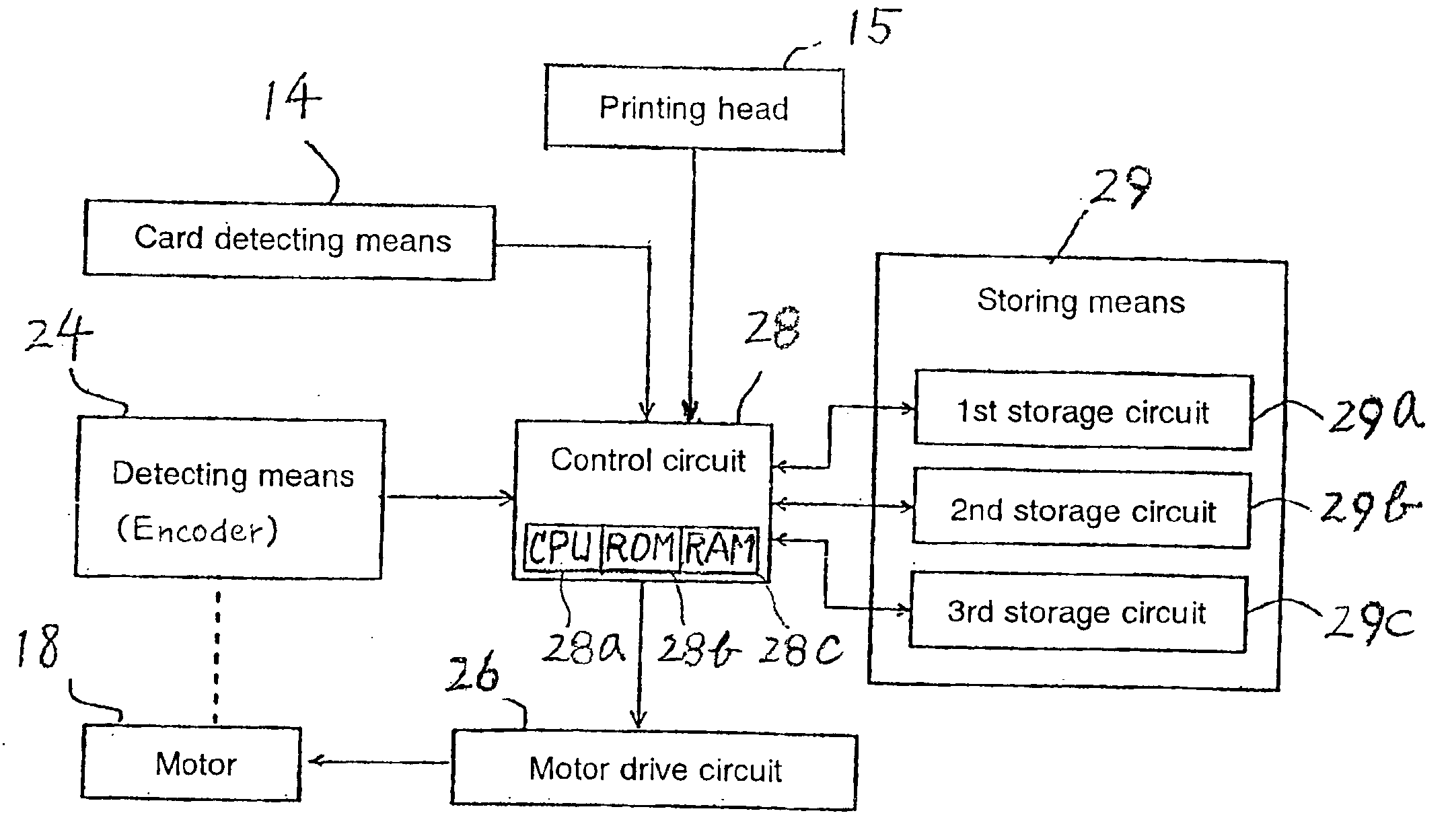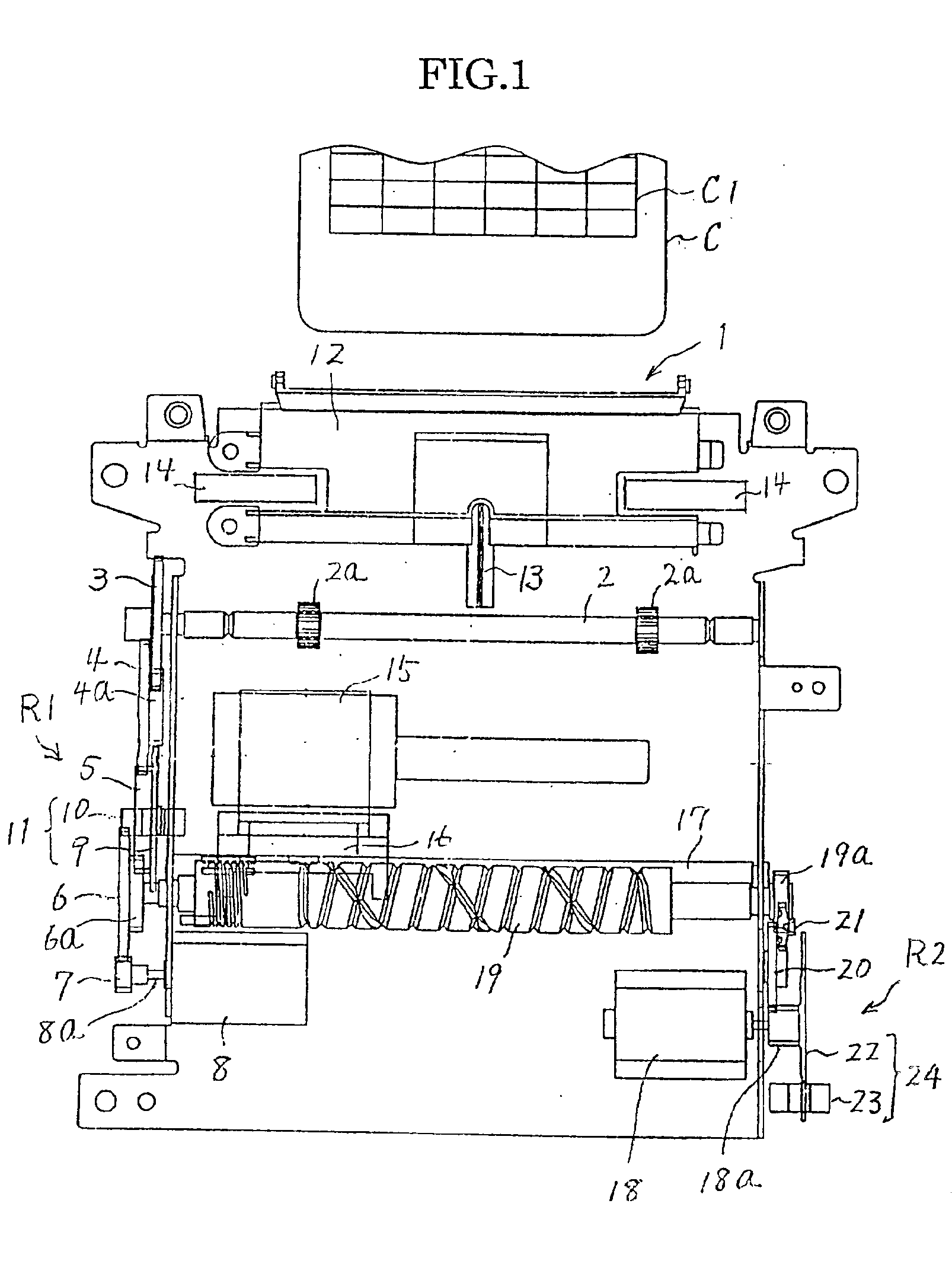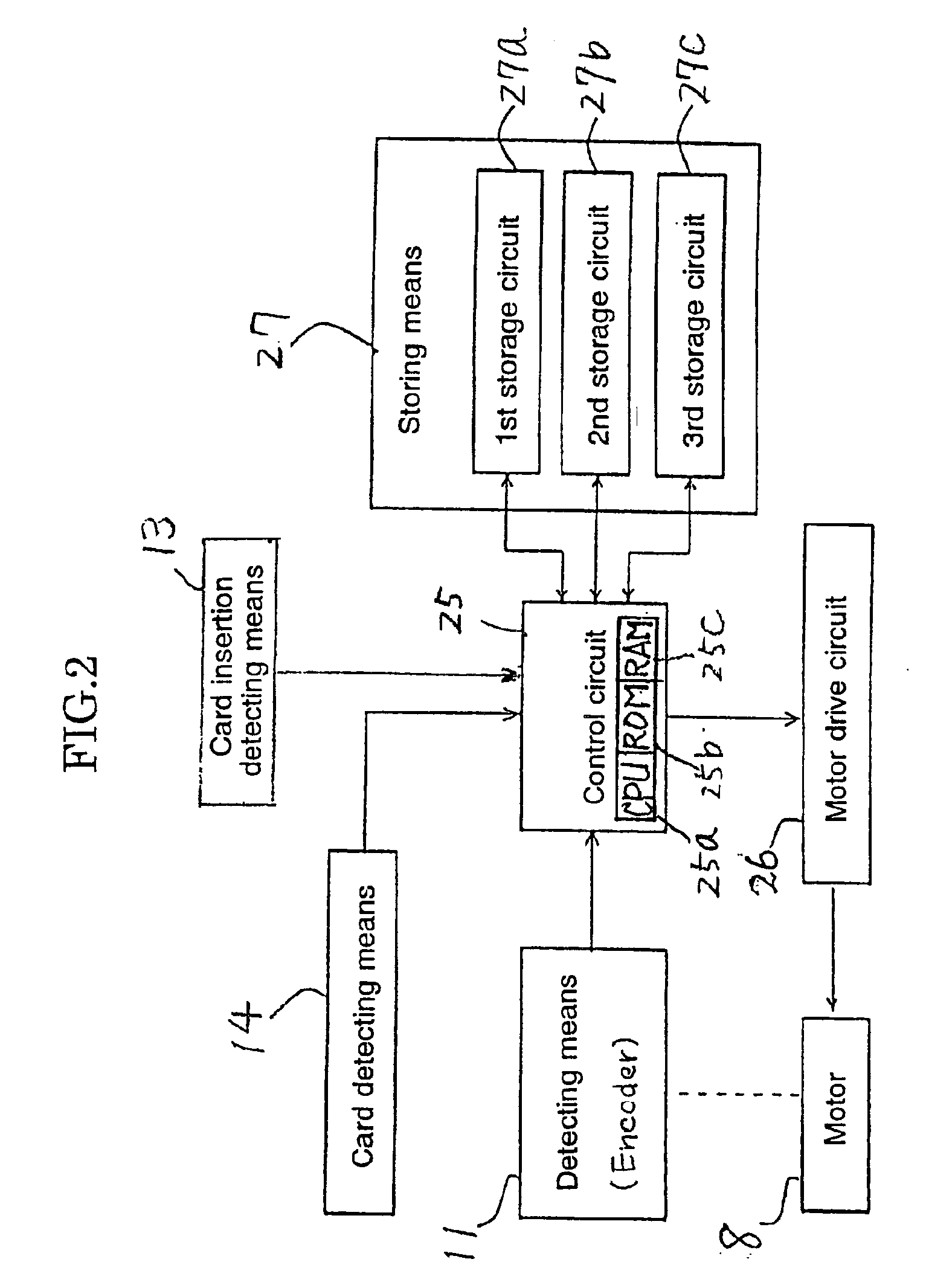Motor control method and apparatus, time recorder having same and impact type printing apparatus
- Summary
- Abstract
- Description
- Claims
- Application Information
AI Technical Summary
Benefits of technology
Problems solved by technology
Method used
Image
Examples
Embodiment Construction
An explanation will be given of a case in which the apparatus of the invention is applied to a motor for a time recorder as an embodiment of a motor control method according to the invention as follows.
As shown by FIG. 1, a horizontally rotatable roller shaft 2 is provided near an upper portion of frame 1. The roller shaft 2 has pinch rollers 2a, 2a fixedly attached at positions in corresponding to both sides of a time card C. Rollers (not illustrated) paired with the pinch rollers 2a, 2a are rotatably provided on the opposite side of the time card C “pinch” time card C so that it can be moved in the up and down direction by forward and reverse rotation of the roller shaft 2. A wheel train R1 for moving the time card C in the up and down direction by transmitting rotation of a direct current motor (card feed motor) 8 to the roller shaft 2 is provided at a front left side portion of the frame 1.
A brief explanation will be given of the construction of the wheel train R1 by proceeding ...
PUM
 Login to View More
Login to View More Abstract
Description
Claims
Application Information
 Login to View More
Login to View More - R&D
- Intellectual Property
- Life Sciences
- Materials
- Tech Scout
- Unparalleled Data Quality
- Higher Quality Content
- 60% Fewer Hallucinations
Browse by: Latest US Patents, China's latest patents, Technical Efficacy Thesaurus, Application Domain, Technology Topic, Popular Technical Reports.
© 2025 PatSnap. All rights reserved.Legal|Privacy policy|Modern Slavery Act Transparency Statement|Sitemap|About US| Contact US: help@patsnap.com



